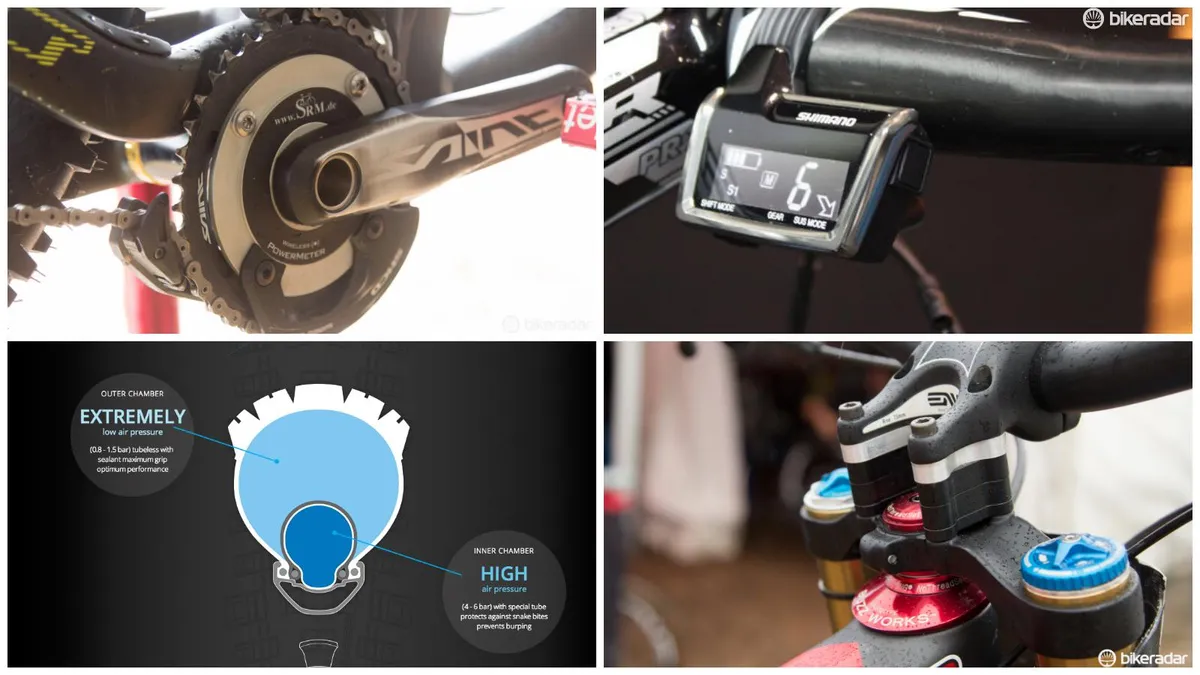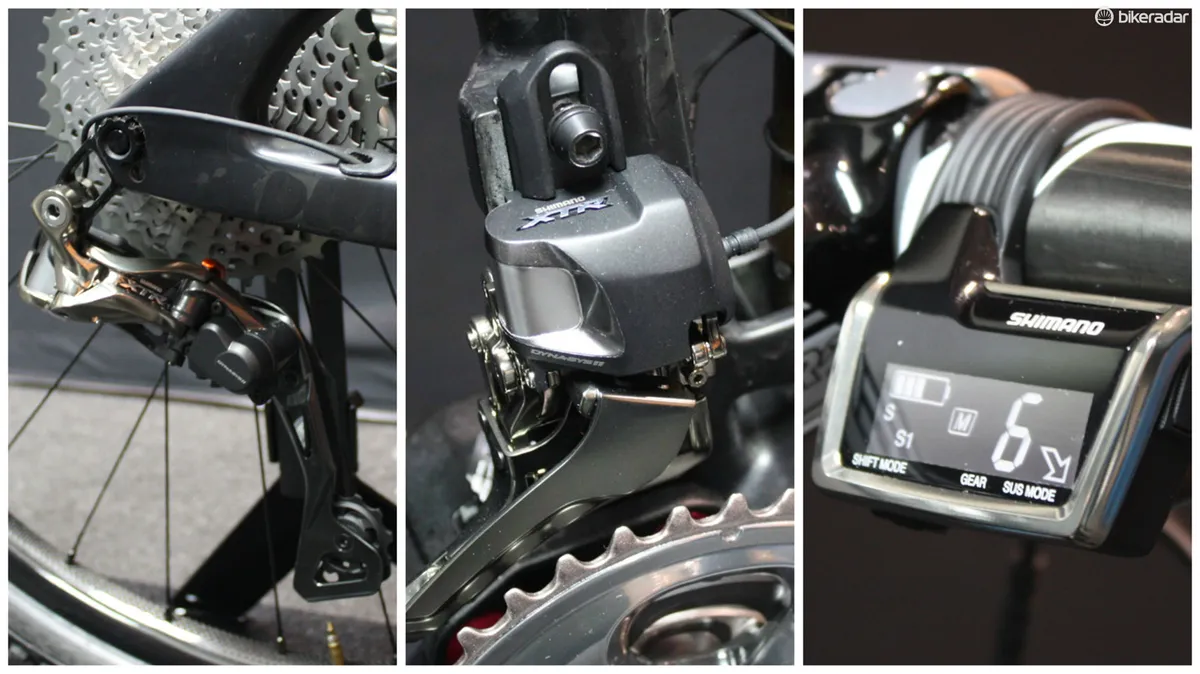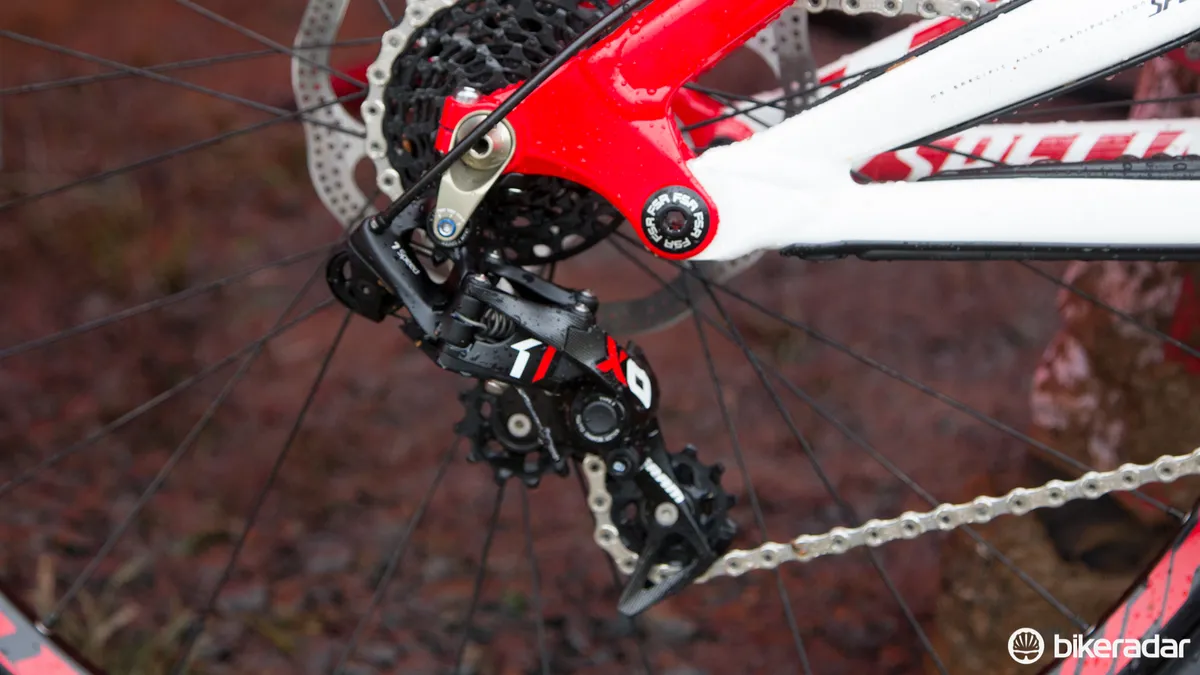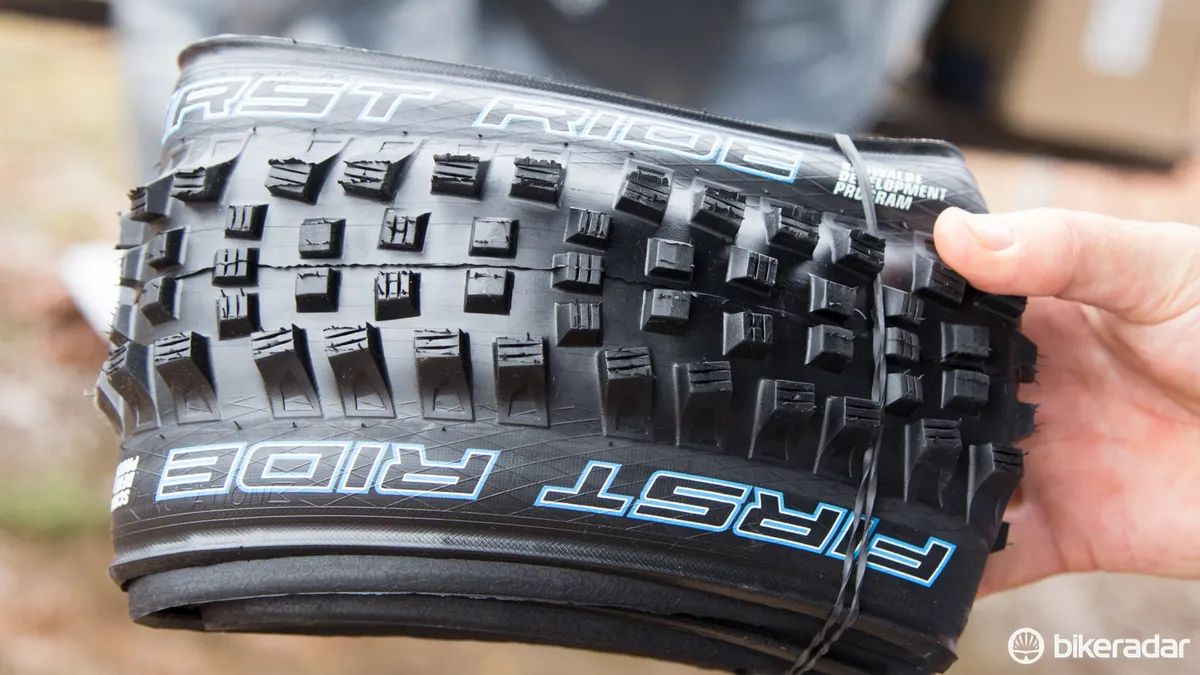Much like Formula One, the pinnacle of motorsport, World Cup downhill racing is the ultimate testing ground for new technology in mountain biking. Based on trends from the 2014 season just past, there are a few things that we suspect will become commonplace in next year’s racing season, a few that likely won’t, and all-new tech that we believe might just appear.
With the top 10 elite men (and more) finishing the season at the World Championships all on 27.5in wheels, it seems safe to say that the 26in wheel is just about done in all forms of mountain biking – except when tricks are involved. With the wheel size debate seemingly put to rest in downhill for the foreseeable future, let’s look at some other tech predictions.
Tyres
Schwalbe’s ProCore tyre system appeared during the season under the likes of Sam Hill. This dual-chamber system uses a special, smaller tube to hold a tubeless tyre bead firmly in place, removing the risk of a pinch flat against the rim.

We suspect many riders will be using Schwalbe's new ProCore technology for 2015, although most likely won't admit it
The benefits of this system go far further than preventing flats – with the ability to run a far lower pressures in the main tyre, it’s possible to achieve greater small-bump compliance, something that frame and suspension manufactures have previously struggled to balance with maintaining pedal-induced movement.
It's claimed the system allows for far lighter tyres too, and while this may be true, it does add roughly 200g per wheel, negating much of the savings to be had.
With this technology, it’s possible we’ll see the use of lighter air rear shocks on certain, shorter courses (air shocks suffer heat build-up on longer courses). This suspension technology has been used in the past, but tyre systems such as this could mean the slight difference in small bump compliance could move the responsibility away from the rear shock.
Adjustable geometry
While not entirely new, adjustable geometry is now being used to tailor the bike to individual courses – for the same reasons that suspension is adjusted to specific conditions.

Greg Minnaar's bike often shows plenty of custom geometry adjustments
The season just past saw bikes belonging to the likes of Josh Bryceland and Greg Minnaar featuring custom offset headsets. Another modification we’ve seen is custom fork crowns that change the trail (fork offset) and/or height of the front end.
Some bikes, such as Brendan Fairclough's new Scott Gambler, allow for chainstay length adjustment, while other teams use aftermarket options such angle adjust headset cups and eccentric pivot hardware to experiment with geometry changes.
Aerodynamics
Where races are being won or lost by tenths of a second, there’s arguably no other discipline in cycling that’s more ready for aerodynamic developments.
It’s not a huge secret that Trek World Racing and Specialized have experimented with aerodynamics, but we've not yet seen the benefits of this research beyond basic tuck positioning.
We suspect we’ll start to see product design taking on aerodynamic considerations and moto-inspired baggy clothing would be an obvious start. Considering Specialized now has its own wind tunnel, we think the Big-S will be the first brand to make serious headway in this area.
Frame material
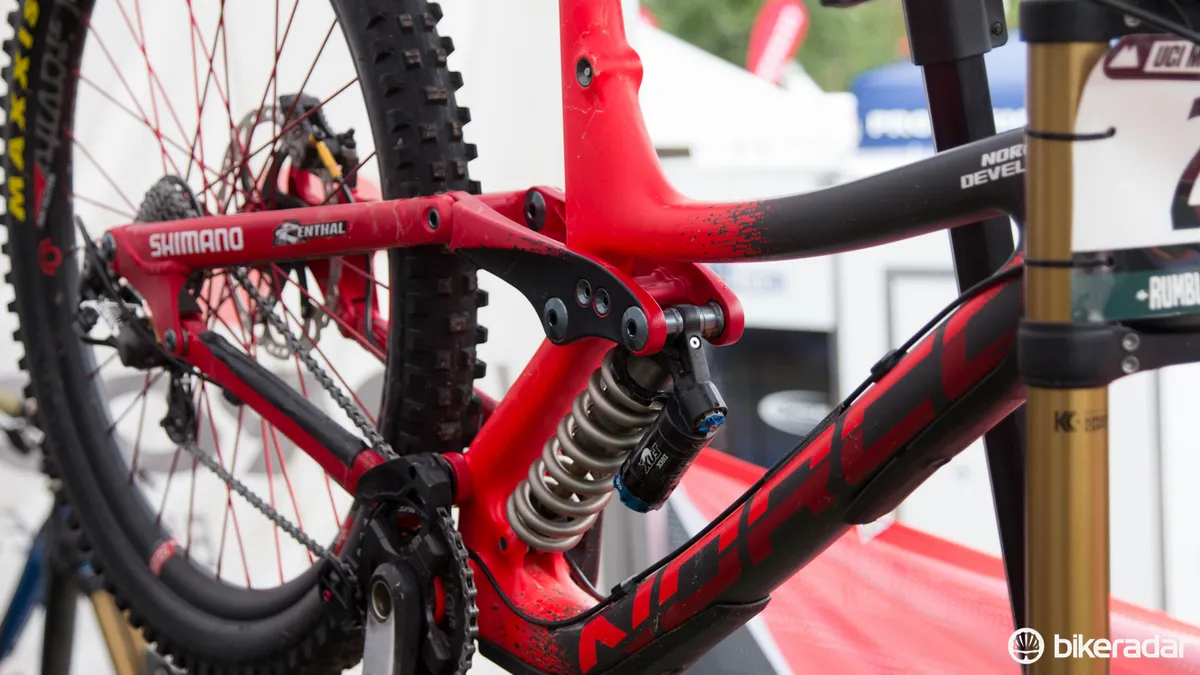
Norco was one brand testing a carbon prototype in 2014. Who will it be for 2015?
Carbon frames in downhill racing are nothing new, but with the rushed-introduction and testing of many 27.5in wheeledbikes during the season, it’s very likely we’ll see some of those models make the shift to a prototype carbon version. The GT Fury 27.5 – the bike of Gee and Rachel Atherton – is a perfect example. We suspect we’ll see it tested in carbon next season.
While many of the big brands offer carbon fibre, there are some notable exceptions that’ll stick with modern and progressing technology in aluminium production – Giant being a notable example. Giant claims that its Glory frame is already lighter than many of its carbon competitors. Other brands can’t justify the mould and production cost of carbon when the aluminium version is competitive.
Data acquisition
Throughout the season, we saw teams such as Lapierre using data telemetry systems at each race, to customise the suspension to the track and retrieve detailed data.
While there’s no doubt the biggest of teams are using similar technology in the bike design process, it’s likely we’ll see more of this technology being used at races to help the team mechanics and suspension sponsors learn more about each track and consequently help their riders before race day.

Gee Atherton's SRM
On top of the suspension-specific data, many riders, including Danny Hart and Gee Atherton, are starting to use power meters during race situations. This power output data is invaluable for analysis to find places on track where riders could be pedalling harder, or where gear choice could be improved. Power meters also have potential to help in suspension tuning, especially on flatter courses where pedalling is crucial.
Linking this information together with high-definition video (from a GoPro or Shimano camera, for example will allow riders, team managers and coaches to carefully analyse practice runs and improve areas of weakness.
Suspension
Air suspension is already common on front forks, with the RockShox Boxxer and Fox 40 Float filling the ranks.
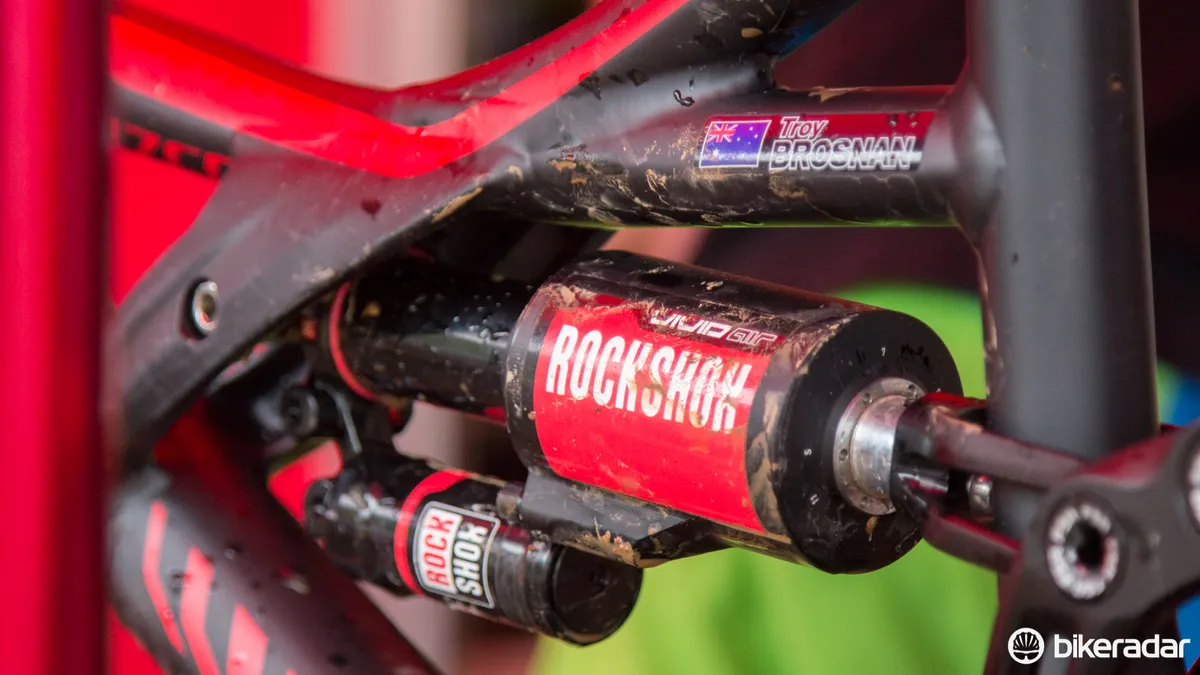
Air shocks occasionally appear in downhill but only for shorter, less-severe courses
However, it’s a different story at the rear of the bike. It’s been noted for a few years now that pedal-filled, open courses allow riders to experiment with a lighter-weight air rear shock, and the likes of Schwalbe new ProCore technology may make this even more possible, but it is still far from a normal occurrence.
The likes of Fox’s not-yet-ready RAD shock on many of its sponsored riders' bikes prove there’s still plenty of development being put toward coil rear shocks and there’s little doubt they’ll continue to be the standard for real downhill courses.
Dropper seatposts
It’s been seen before, but we don’t expect to see it gain popularity in 2015. Past courses such as Pietermarzberg, South Africa have seen riders experiment with adjustable posts, but few riders have taken them into race day. We suspect this technology will keep its place in enduro, but until GPS-based electronic adjustment exists, we can’t see it taking off in downhill.
Electronic shifting
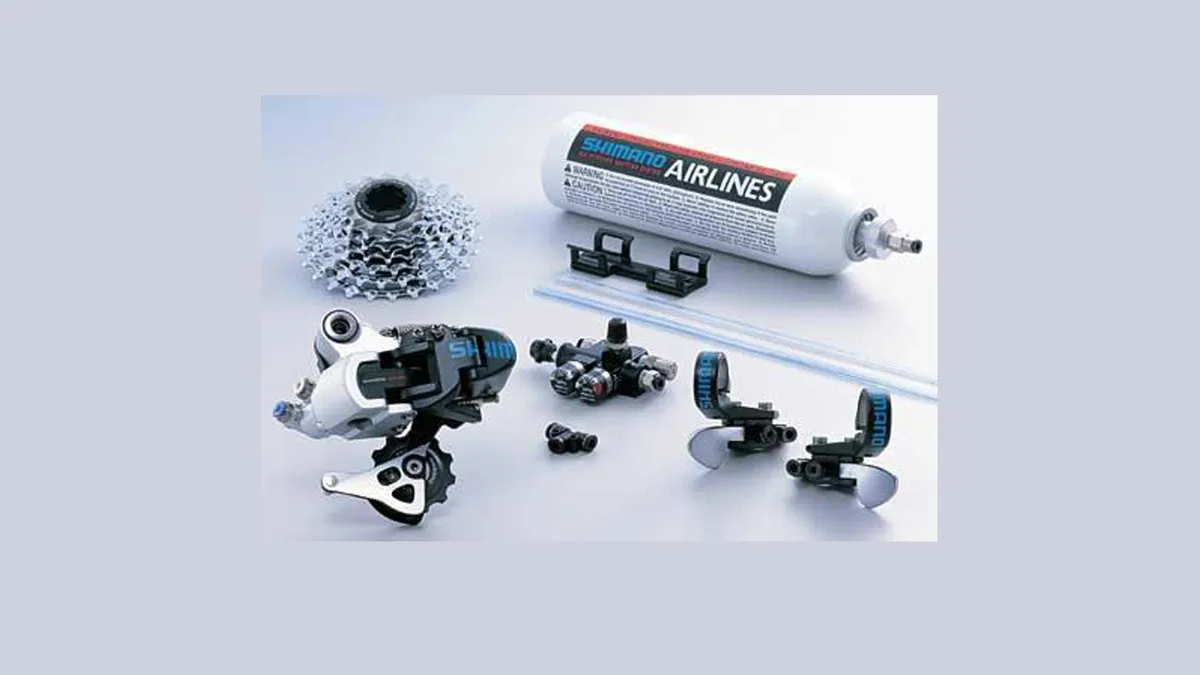
Remember Shimano’s short-lived AirLine shifting system? Electronic shifting certainly offers great potential advantages, especially compared to air-powered shifting…
In many cases, downhill racing is used as a testing bed for mountain bike technology, but electronic shifting was introduced this last season in cross-country (and won on) in the form of XTR Di2.
With no front shifting and the minimal gear range needed in downhill, the benefits for electronic in downhill is to simplify the cable routing and reduce shift effort or hand movement, but it’s something we can’t imagine happening for 2015 (although feel free to prove us wrong, Shimano!). Perhaps we’ll see SRAM’s new X01 DH group turn to an electronic wireless version for 2016?
